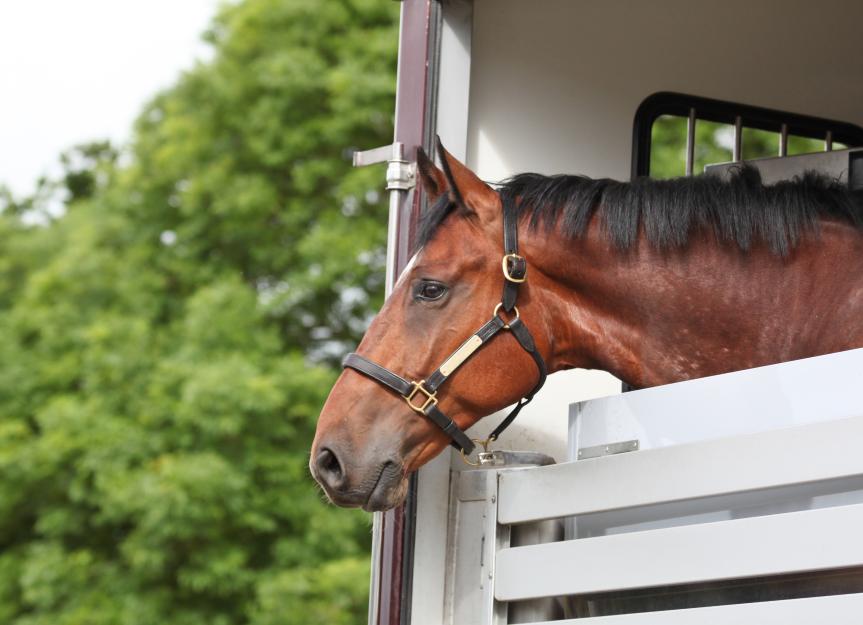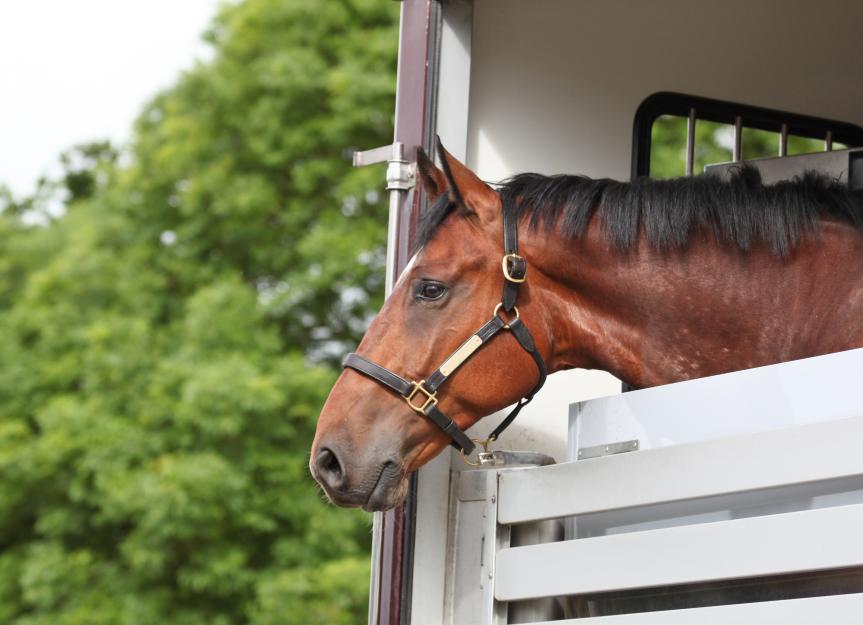
At some point in a horse’s life, they will likely need to be transported on a horse trailer. It’s important to prepare your horse for a successful long-distance trip and learn how you can make the journey more comfortable while ensuring their health and safety.
Key Takeaways
- Preparing for long-distance horse travel is essential for a low-stress trip and a positive experience.
- Health documentation requirements vary by state and venue. Know the requirements and work with your veterinarian to have the necessary papers.
- Planning rest stops every three to four hours during long hauls gives your horse a chance to rest and offers you an opportunity to monitor their health.
Prepping Your Horse for Travel
Horse travel is part of horse ownership, with many horse owners frequently making local trips for lessons, trail riding, trips to the veterinarian, and horse shows.
Many horses are used to short trips; however, long-distance horse traveling requires preparation.
There’s a lot to cover before you head out on a long trip, including the horse health documents you’ll need, long-hauling tips, and how to monitor your horse’s health throughout the trip.
Veterinary Check-Up
Before loading up, confirm required health documents and connect with your veterinarian on any concerns to make sure you’re prepared:
-
Verify your Coggins. Requirements vary by state and facility. Coggins are typically valid for two years for in-state travel. Interstate travel, some states, and facility owners require an annual test.
Conditioning and Acclimatization for Horse Travel
Trailering is stressful for any horse, even calm and experienced travelers. Horses must constantly balance while in motion, which raises cortisol, the stress hormone.
Help your horse have a successful trip by:
-
Taking short, local hauls for practice and confidence
-
Training for loading and unloading
-
Making sure your horse is in good health and can exercise before travel
Horse Hydration and Nutrition
Water and nutrition are crucial for maintaining a horse’s health on the road.
- Offer plenty of water before and during the trip. Some horses won’t drink unfamiliar water, so bring jugs from home or flavor unfamiliar water with electrolytes, like Finish Line Apple-A-Day.
- Keep salt intake steady. Free-choice salt or a pre-trip electrolyte supplement, like Farnam Electrolyte Paste, can encourage drinking.
- Avoid abrupt diet changes. Bring hay and grain that your horse is used to eating at home.
Protective Gear
There are mixed opinions on using protective gear, what type, and when. Ask your veterinarian for advice based on your horse and trip length.
Frequently used protective gear includes:
Be sure to check any gear for fit and that your horse is comfortable wearing it before loading up.
Loading and Unloading Your Horse
Trailering isn’t a natural part of a horse’s life. Helping them prepare for a smooth trip includes practicing loading and unloading beforehand.
If your horse is inexperienced, use these tips for training your horse to load into a trailer:
-
Practice in low-stress situations that allow for time and patience.
-
Calmly walk your horse near the trailer.
-
Let them investigate by sniffing the ramp or floor of a step-up.
-
Encourage them to take a step onto the ramp or into a step-up trailer.
-
Reward their effort with praise and a treat. Repeat until fully loaded.
-
Once inside, allow them to stand calmly and then close the doors.
To unload a horse from a trailer:
-
Untie or unclip your horse from the trailer tie.
-
Open back doors and/or lower the ramp.
-
Confidently ask your horse to back out of a straight load or calmly turn around in a box stall.
-
Be patient and don’t rush.
Repeat loading and unloading at home and on local trips to build your horse’s confidence.
Monitoring Your Horse’s Health on the Road
Local hauls under two to three hours typically don’t require breaks. Experts recommend stopping every three to four hours to allow your horse to rest and for you to check on their health.
Vital Signs to Watch
Planning stops to coincide with fuel-ups can maximize your travel time. During these breaks, check your horse’s vital signs, including:
Signs of Travel Stress or Illness
Long-distance travel can be hard on horses and may stress their bodies and immune systems.
When you stop for breaks, also check your horses for signs of stress or illness. Symptoms may include:
Nothing replaces an up-close look at your horse; however, installing cameras in the trailer, like the INSTACHEW Purrsight 360 Degree Wi-Fi Security Camera, can provide peace of mind.
Handling Horse Travel Emergencies
If your horse is sweating excessively or showing signs of colic, illness, or extreme stress, contact a vet.
Investing in a roadside assistance plan, such as USRider, can make an emergency more manageable. All USRider plans include emergency referrals for veterinarians, farriers, and layover facilities.
Post-Travel Care for Horses
Arriving at a competition or multi-day trail ride is a busy time. Stalls must be set up with shavings, water, and hay. Tack and equipment must be unloaded, and trailers must be parked elsewhere on the grounds.
Assessing your horse’s overall health should also be a priority.
1. Immediate Check-Up
As soon as you arrive at your destination:
-
Check your horse for cuts, abrasions, or swelling and apply wound care if needed.
-
Walk your horse and check for stiffness.
-
Offer water and small amounts of feed.
2. Rest and Recovery
Consider how you feel after a long car ride; chances are, you feel stiff and exhausted. Horses experience similar fatigue. If possible, arrive at least a day early and provide eight to 12 hours of rest before work.
Also, monitor your horse’s health for 24–48 hours, watching for:
-
Cough
-
Fever
-
Water consumption
-
Feed/hay consumption
-
Manure production
3. Resume Routine Gradually
Once home or moved into a new barn, give your horse time to adjust.
-
Return slowly to regular exercise.
-
Make any diet changes over several days.
-
Offer turnout based on normal living routines. If a horse has never been on turnout or it has been limited for long periods, reintroduce turnout slowly.
Horse Travel FAQs
How far can a horse travel in a day by trailer?
Experts recommend limiting hauling to 12 hours a day. Unloading for eight hours of rest with hand-walking or turnout is ideal.
How often should you stop while trailering a horse?
Plan to stop every three to four hours to check vital signs, offer water, and allow for rest.
Can a horse stay overnight in a trailer?
Driving through the night during summer months can provide cooler hauling conditions. However, leaving a horse in a parked trailer overnight is not recommended.



